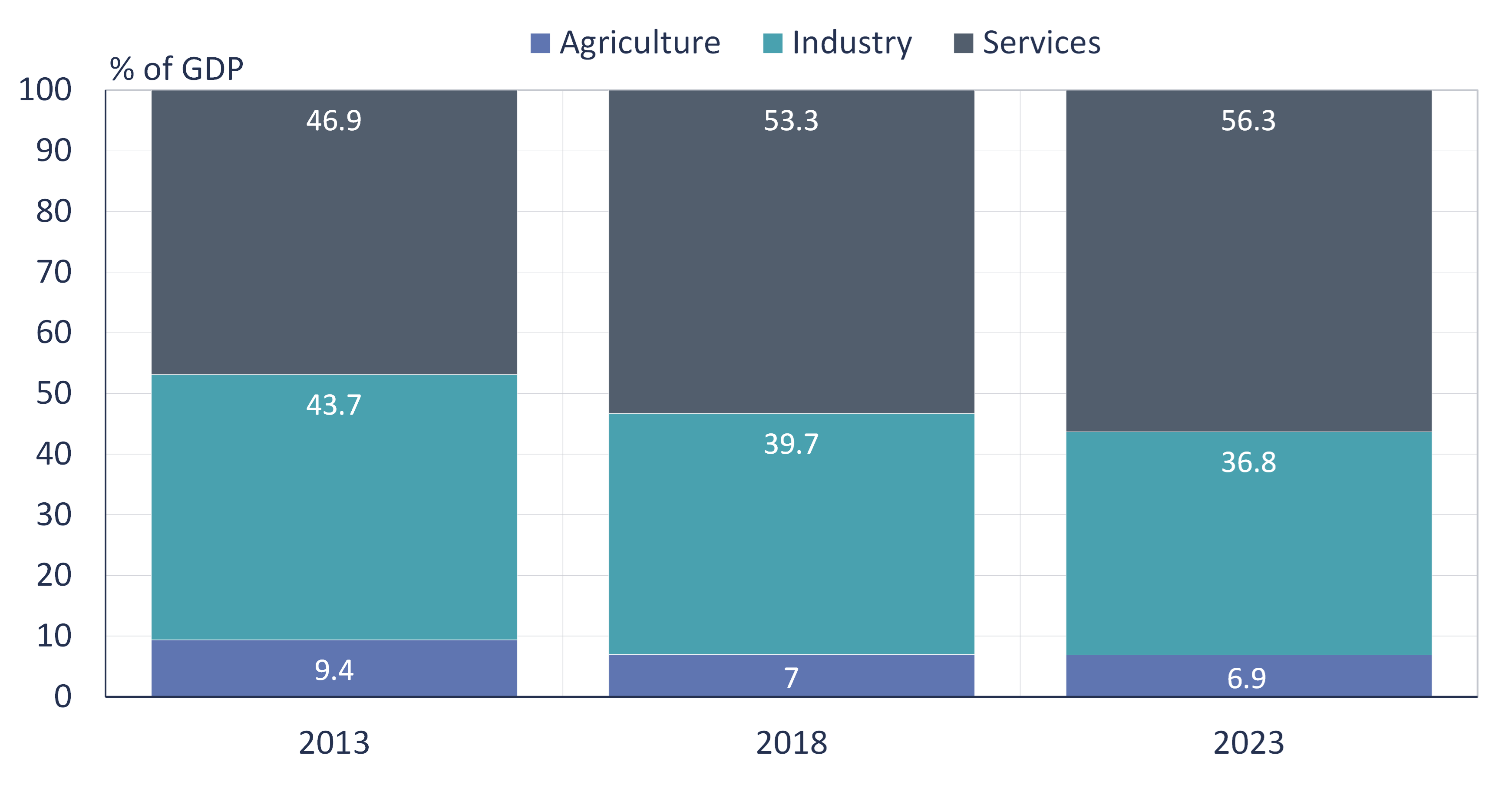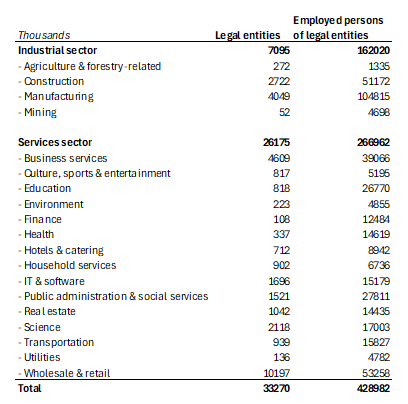BOFIT Weekly Review 8/2025
China’s structural transition continues; service sector takes on greater importance
The data for China’s fifth economic census released by the National Bureau of Statistics at the end of last year show that the Chinese economy continues to evolve towards an economic structure typical of an advanced economy. The previous economic census was conducted in 2018. The latest census data are used to update China’s nominal GDP. The country’s GDP exceeded 130 trillion yuan (about $18.08 trillion), accounting for roughly 17 % of global nominal GDP in 2023. China is the world’s second largest economy after the United States (26 % of global GDP).
Changes in the overall structure of the Chinese economy can be seen in the growth of the service sector. At the end of 2023, the value-added generated by the service sector (tertiary industry) accounted for 56 % of the economy’s total output, or 3 percentage points more than in the 2018 census. The industrial sector’s (secondary industry) share of GDP fell to 37 % (40 % in 2028), while the share of agriculture (primary industry) contributed just 7 %.
China’s service sector plays an increasingly large role in the economy.

Sources: NBS and BOFIT.
In the five years since the previous economic census, the number of legal entities (mainly corporations) in the industrial and service branches grew by 53 % to 33.3 million. The number of workers in these entities grew by 12 % to a total of 429 million, of which 62 % involved the service sector (up from 55 % in 2018), with the remaining 38 % working in the industrial sector (down from 45 % in 2018). The census also reveals that jobs in the industrial sector have decreased, indicating progress in industrial automation and efficiency gains. The service sector’s significance as an employer has grown markedly, with the number of people employed in it rising by 26 %, while the number of persons employed in the industrial sector fell by 5 %. There were 180 million self-employed units in China in 2023.
The digital economy was included in the census for the first time in 2023. Nearly 3 million corporate enterprises, employing over 36 million people, form the core of the emerging digital economy. Nearly half of firms in this sector were engaged in digital technology application, a third were involved in industries driven by digital factors, while the rest largely were engaged in digital products manufacturing or in digital product services.
Number of firms and workers by branch, 2023.

Sources: NBS and BOFIT.